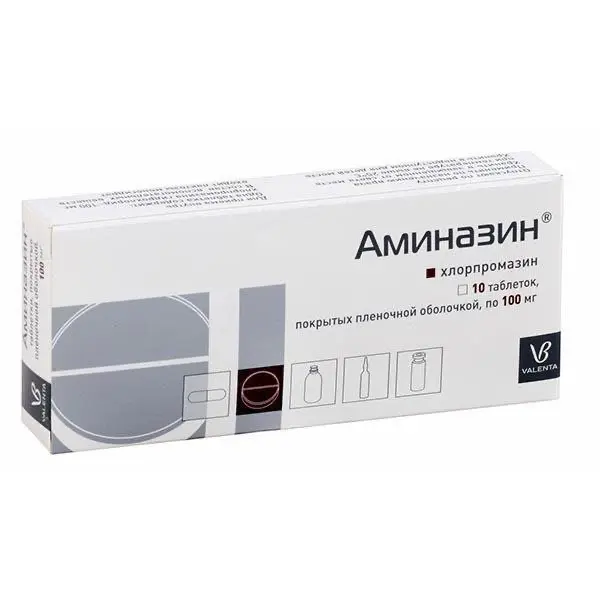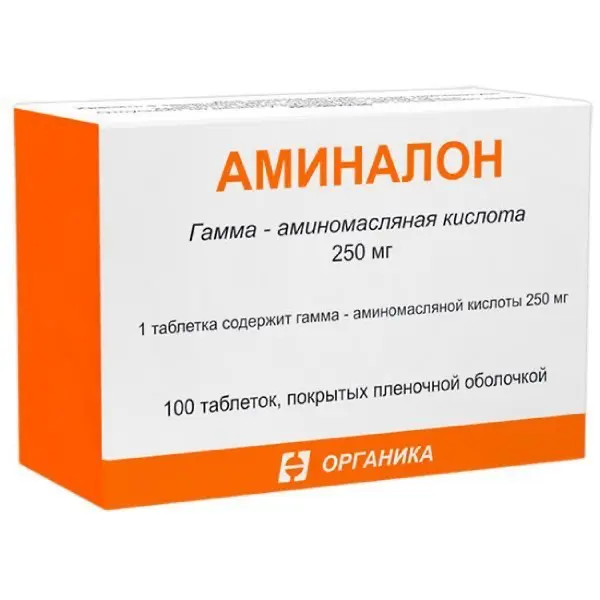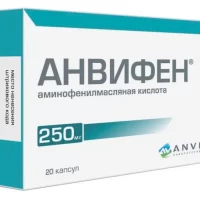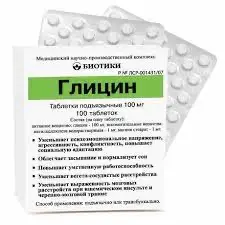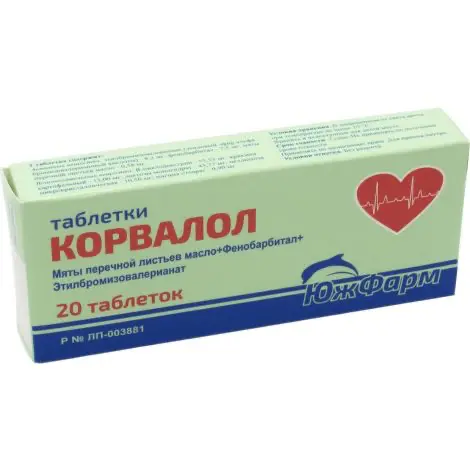Description
Aminazin Pharmacodynamics
Antipsychotic medicine (neuroleptic) from phenothiazine derivatives group. It has a pronounced antipsychotic, sedative, antiemetic effect. It attenuates or completely eliminates delirium and hallucinations, stops psychomotor agitation, reduces affective reactions, anxiety, restlessness and decreases motor activity.
The mechanism of antipsychotic action is associated with blockade of postsynaptic dopaminergic receptors in the mesolimbic structures of the brain. It also has a blocking effect on the ?-adrenoreceptors and inhibits the release of pituitary and hypothalamic hormones. However, blockade of dopamine receptors increases secretion of prolactin by pituitary gland.
Central antiemetic effect is caused by inhibition or blockade of dopamine D2-receptors in chemoreceptor trigger zone of cerebellum, peripheral – by blockade of vagus nerve in GI tract. The antiemetic effect appears to be enhanced by anticholinergic, sedative and antihistaminic properties. The sedative effect appears to be due to alpha-adrenoblocking activity. It has a moderate to weak extrapyramidal effect.
Indications
Chronic paranoid and hallucinatory-paranoid states, states of psychomotor agitation in schizophrenia (hallucinatory delusional, hebephrenic, catatonic syndromes), alcoholic psychosis, manic agitation in manic-depressive psychosis, psychotic disorders in epilepsy, agitated depression in patients with presenile psychosis, manic-depressive psychosis and other diseases accompanied by agitation and tension. Neurotic diseases accompanied by increased muscle tone. Persistent pain, including causalgia (in combination with analgesics), persistent sleep disorders (in combination with sleeping pills and tranquilizers). Meniere’s disease, vomiting in pregnant women, treatment and prevention of vomiting during treatment with anticancer drugs and radiation therapy. Pruritic dermatoses. As part of “lytic mixtures” in anesthesiology.
Contraindications .
Impaired function of the liver, kidneys, hematopoietic organs, progressive systemic diseases of the brain and spinal cord, myxedema, severe cardiovascular diseases, thromboembolic disease; advanced bronchiectatic disease; closed-angle glaucoma; urine retention associated with prostatic hyperplasia; marked CNS depression, coma, brain injury, children under 12 years old for this form of treatment.
Use during pregnancy and lactation: contraindicated during pregnancy.
If it is necessary to use chlorpromazine during pregnancy, the duration of treatment should be limited and the dose should be reduced at the end of pregnancy, if possible. It should be borne in mind that chlorpromazine prolongs labor.
Breastfeeding should be discontinued if use during lactation is necessary.
Chlorpromazine and its metabolites penetrate the placental barrier and are excreted with breast milk.
Clinical studies have shown that chlorpromazine may have teratogenic effects. When chlorpromazine is administered in high doses during pregnancy, digestive disorders associated with atropine-like action and extrapyramidal syndrome have been observed in neonates in some cases.
Dosage and administration method
- It is established individually. When administered orally, the single dose for adults is 10-100 mg, the daily dose is 25-600 mg; for children aged 1-5 years, 500 mcg/kg every 4-6 hours; for children over 5 years old, 1/3-1/2 of the adult dose may be used.
- When administered v/m or intravenously for adults, the initial dose is 25-50 mg. When administered intravenously or intravenously in children over 1 year of age, the single dose is 250-500 mcg/kg.
- Frequency of oral or parenteral administration depends on indications and clinical situation.
- Maximum single dose: for adults when administered orally – 300 mg, when administered intravenously – 150 mg, when administered intravenously – 100 mg.
- Maximal daily doses: for adults when administered orally – 1.5 g, when administered intravenously – 1 g, when administered intravenously – 250 mg; for children under 5 years of age (body weight under 23 kg) when administered orally, intravenously or intravenously – 40 mg, for children over 5 years of age (body weight over 23 kg) when administered orally, intravenously or intravenously – 75 mg.

